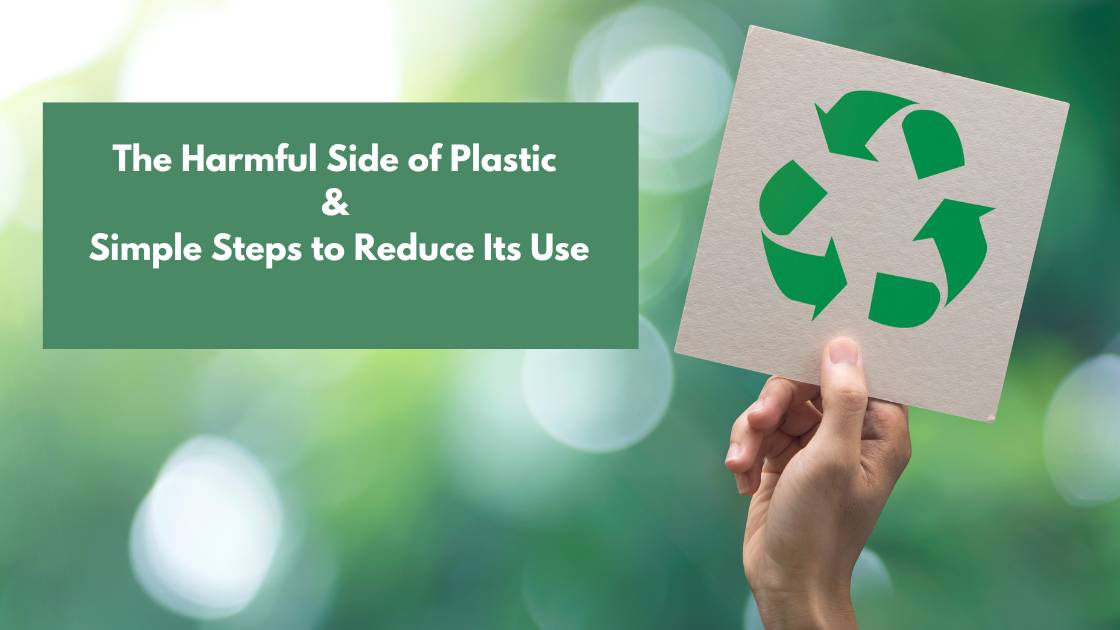The Harmful Side of Plastic and Simple Steps to Reduce It's Use
Blog Home

Plastic has become a part of our everyday lives. It’s used in packaging, healthcare, construction, and more. While it’s convenient, plastic also has serious costs to the environment, our health, and wildlife. In this post, we’ll explore why plastic can be harmful and share some simple ways to reduce plastic waste—helping both individuals and the planet.
The Good, The Bad, and The Ugly of Plastic
Plastic is made from synthetic polymers that can be molded into various shapes and products. Its versatility and low cost make it a go-to material in many industries. But while plastic is practical, it doesn’t break down easily. Most plastic products can take hundreds of years to decompose, leading to the global problem of plastic pollution.
One of the biggest challenges is how much plastic ends up in the environment. Every minute, the equivalent of one garbage truck full of plastic is dumped into our oceans. If nothing changes, by 2050, there could be more plastic in the ocean than fish. Microplastics in the ocean are particularly dangerous, as they break down into tiny particles that harm marine life and can enter the human food chain.
Plastic also releases toxic chemicals as it degrades. These chemicals can harm both wildlife and humans, leading to long-term health risks. Ingesting plastic debris can be fatal for marine animals like fish, birds, and turtles.
The Environmental Impact of Plastic Production
In addition to the pollution it creates, the production of plastic takes a heavy toll on the environment. It relies on non-renewable resources like oil and natural gas. The process of producing plastic contributes significantly to greenhouse gas emissions. In fact, the production and incineration of plastic could result in 1.34 billion metric tons of carbon dioxide emissions by 2030, worsening the effects of climate change.
Why Reducing Plastic Use Matters
Cutting back on plastic has wide-ranging benefits:
- Reducing Plastic Pollution: When we use less plastic, less waste ends up in the oceans and ecosystems. This helps protect wildlife from the dangers of ingestion and entanglement, and it helps keep ecosystems healthy.
- Protecting Human Health: As plastic waste breaks down, it releases harmful chemicals into the environment. By using less plastic, we can limit exposure to these toxins and reduce human health risks.
- Lowering Carbon Emissions: Reducing plastic use lowers the demand for plastic production, which in turn reduces reliance on fossil fuels. This helps cut down on greenhouse gas emissions and fights climate change.
Easy Ways to Use Less Plastic
It might seem challenging to avoid plastic, but small changes can have a big impact. Here are some easy ways to get started:
- Switch to Reusable Bags and Bottles: One of the simplest ways to cut down on single-use plastics is to use reusable bags, water bottles, and containers. This helps reduce the number of plastic products that end up in landfills or the ocean.
- Say No to Plastic Straws and Utensils: Items like plastic straws and cutlery are used for only a few minutes before they’re thrown away. By choosing eco-friendly alternatives such as reusable or biodegradable options, you can help reduce unnecessary waste.
- Choose Minimal Packaging: When shopping, opt for products with plastic-free packaging or those that use biodegradable materials like cardboard or paper.
- Avoid Products with Microbeads: Microbeads, found in some personal care products like face washes, are tiny plastic particles that end up in our oceans. Choose microbead-free products to prevent this type of pollution.
Conclusion
Cutting back on plastic is essential for protecting the environment, our health, and the wildlife we share the planet with. While it may seem overwhelming, even small steps—like using reusable bags, avoiding plastic straws, and choosing plastic-free alternatives—can make a huge difference. Together, we can work toward reducing plastic waste and creating a more sustainable world.




.jpg)

